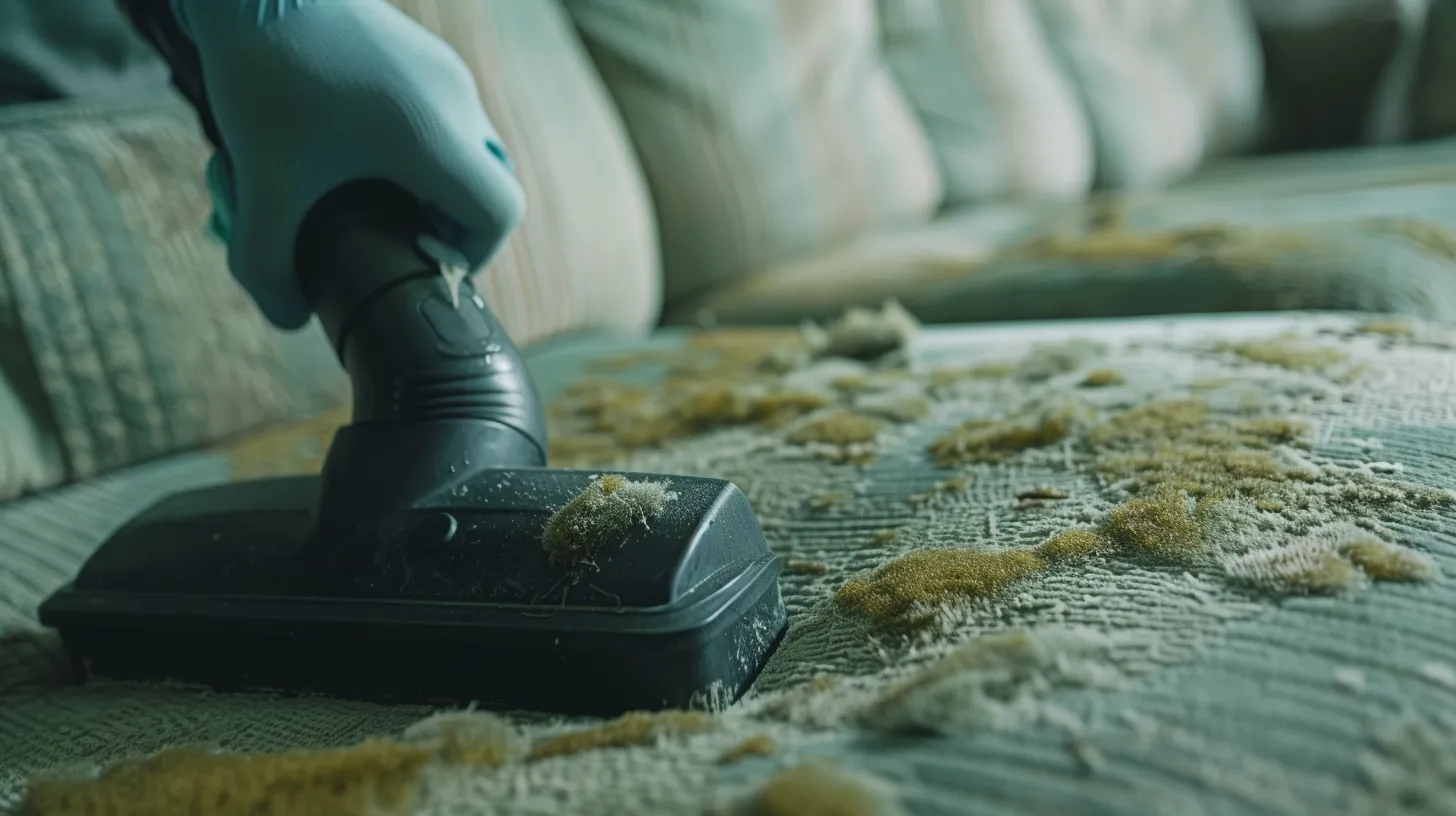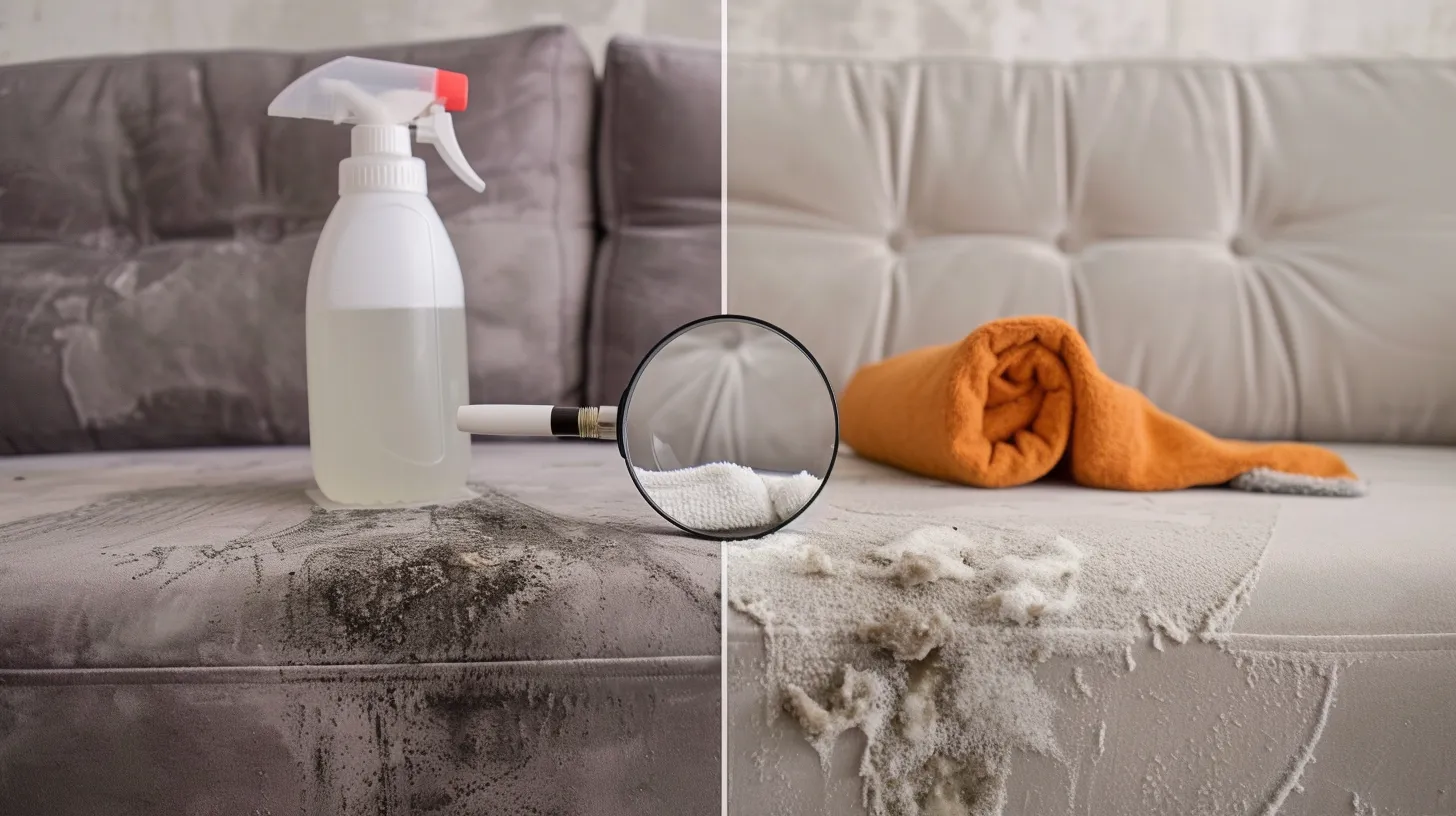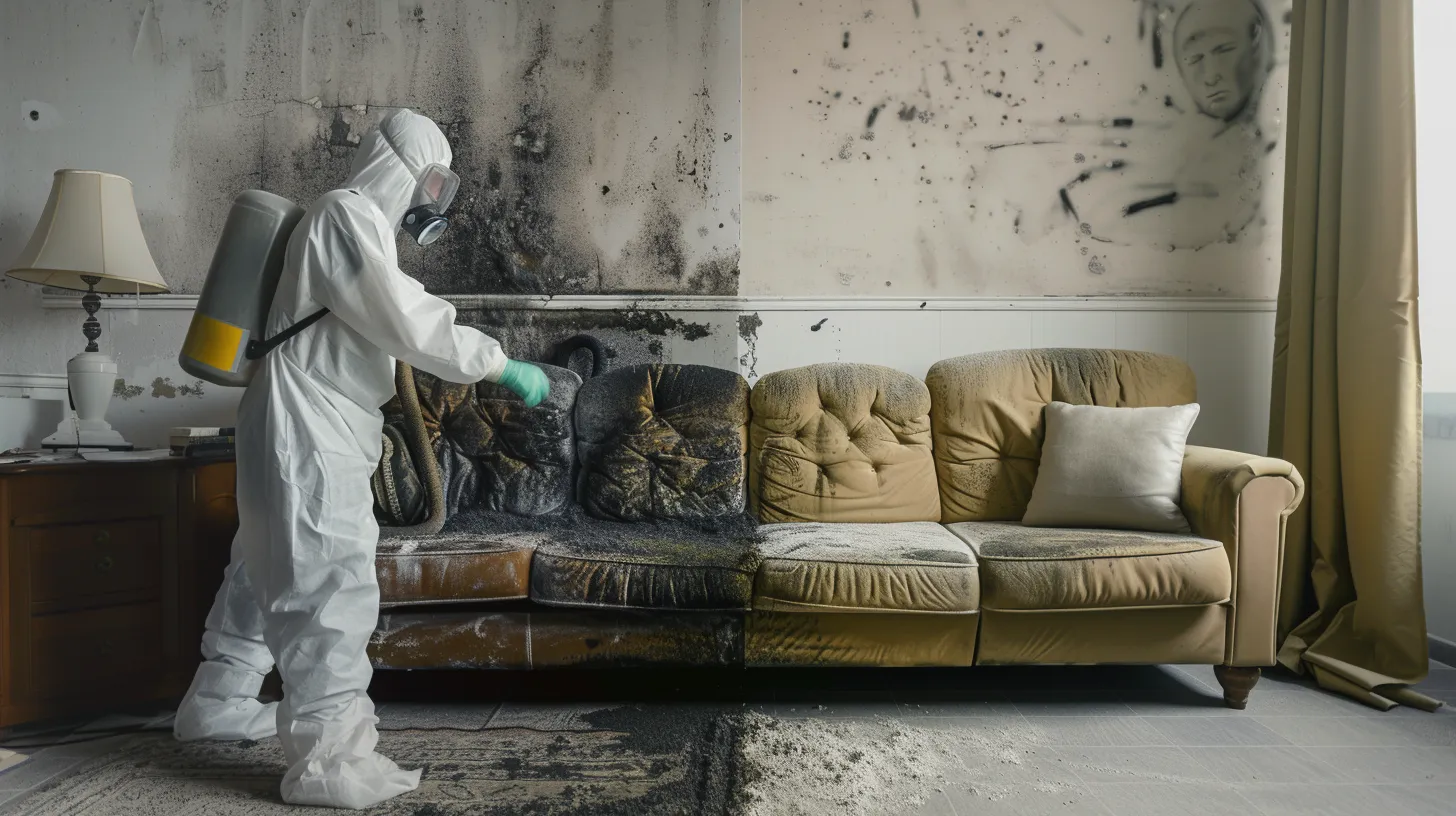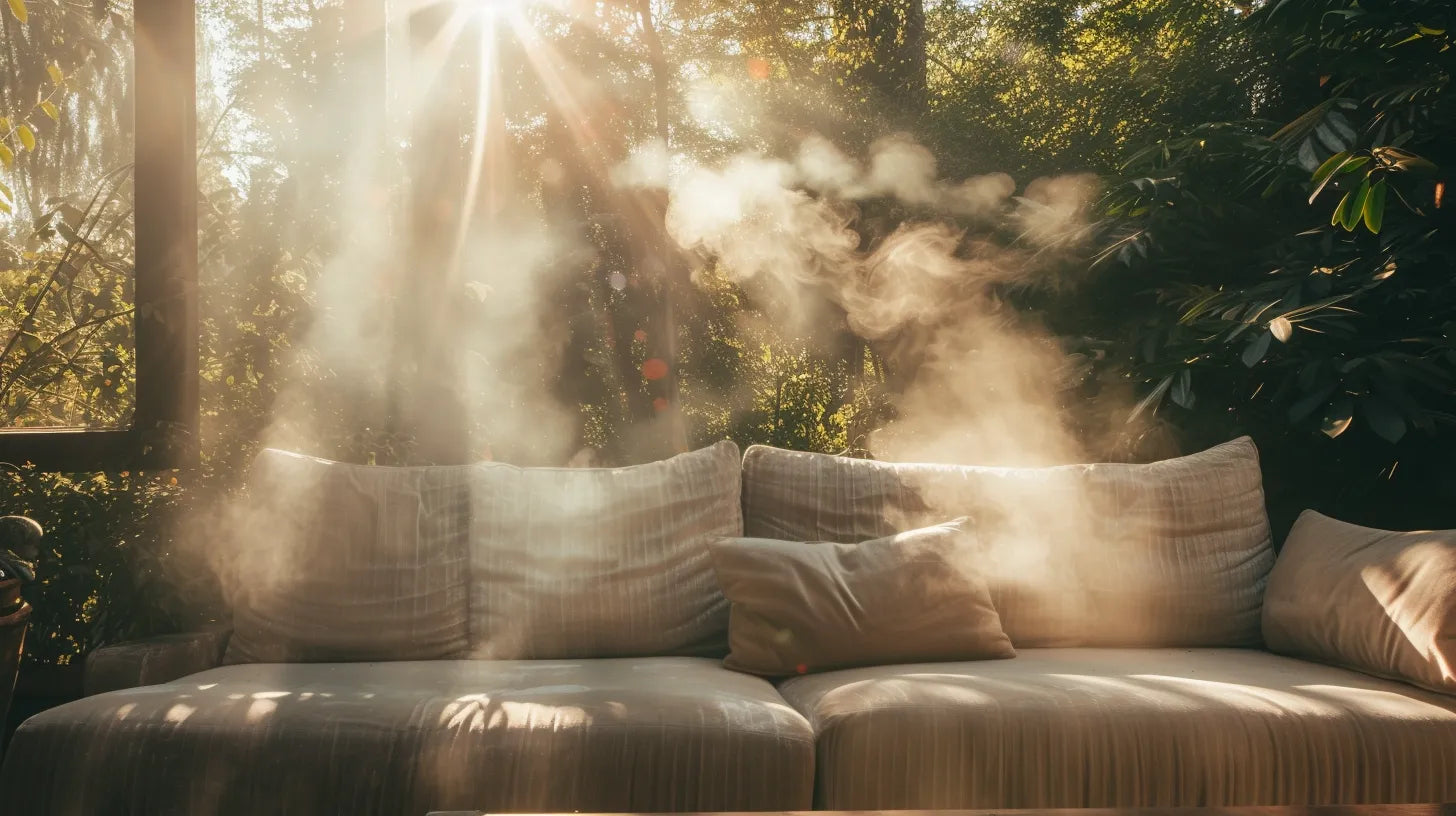Mold on fabric furniture not only detracts from its aesthetic appeal but can also pose significant health risks. The process of removing mold involves several steps, starting from natural drying methods to applying chemical solutions.
While sunlight and fresh air play a crucial role in drying out the upholstery, the use of vinegar or rubbing alcohol can be effective in eliminating mold spores. However, the intricacies of choosing the right method and ensuring the fabric's integrity while preventing future mold growth present a complex challenge.
In our continued exploration, we will uncover the nuances of each technique, highlighting the importance of a meticulous approach.
Exposing to Sunlight
Harnessing the power of sunlight serves as an effective strategy in mitigating mold growth on fabric furniture by leveraging its natural drying and disinfectant properties. Sunlight, a powerful ally in the battle against mold, offers more than just brightness; it provides a natural means of eradicating mold spores that cling to the surfaces and deep within the weave of fabric furniture. When these items are exposed to sunlight, the ultraviolet (UV) rays act to dry out the moisture that mold requires to thrive, effectively creating an environment where mold spores struggle to survive.
Moreover, choosing a bright, sunny day with low humidity is crucial for maximizing the effectiveness of sunlight exposure. This optimal condition accelerates the drying process, making it difficult for mold to sustain itself and reducing the risk of indoor mold growth. The combination of natural light and fresh air plays a pivotal role in the natural removal of mold spores, further safeguarding fabric furniture from future mold infestations. Consequently, regular sunlight exposure not only addresses current mold issues but also acts as a preventative measure, ensuring that your fabric furniture remains in a healthy, mold-free condition.
Vacuuming the Mold

Initiating the mold removal process from fabric furniture, vacuuming stands out as a critical first step, effectively removing visible mold patches and airborne spores. This method not only targets the easily noticeable mold but also addresses the less visible spores that can cause health issues and further spread within your home. Utilizing a vacuum equipped with a HEPA filter is essential; this advanced filter ensures that mold spores are trapped and not simply redistributed during the cleaning process.
Vacuuming plays a pivotal role in eliminating mold residue, significantly reducing the possibility of mold regrowth on the fabric. It is of utmost importance to thoroughly vacuum all areas of the fabric furniture, including crevices and under cushions, where spores might lurk unnoticed. Achieving a comprehensive cleanup from the outset lays a solid foundation for subsequent cleaning methods.
As the initial step in combating mold on fabric furniture, vacuuming sets the stage for more detailed cleaning methods. By meticulously removing mold spores and residue early in the process, it prevents the spreading of mold and ensures that further cleaning efforts are more effective and enduring.
Vinegar Cleaning Method

After vacuuming has effectively removed visible mold and spores from the fabric furniture, employing a vinegar cleaning solution presents a natural and potent method for further disinfection and prevention. Vinegar, with its acidic properties, acts as a powerful agent that not only removes mold and mildew but also neutralizes toxic microbes residing in the upholstery. By creating a cleaning solution composed of a 1:1 ratio of vinegar and water in a spray bottle, individuals can tackle the challenge of mold removal with confidence and ease.
Before proceeding with a full application, it's prudent to test the vinegar solution on an inconspicuous area of the furniture to ensure fabric safety and colorfastness. Once deemed safe, the solution can be liberally sprayed over the affected areas. The acidic nature of vinegar penetrates the fabric, killing mold at its source and deterring future growth. After allowing the solution to sit for a few minutes, wiping down the upholstery with a damp sponge and rinsing with clear water prepares the furniture for air drying.
The vinegar cleaning method offers a safe, effective, and environmentally friendly option to remove mold from fabric furniture while helping to prevent its return, safeguarding the health of the home environment.
Using Rubbing Alcohol
Rubbing alcohol serves as an effective disinfectant, capable of eliminating harmful fungi and microbes on fabric furniture when mixed with water in equal proportions. This straightforward solution harnesses the power of rubbing alcohol's properties to clean and remove mold in a safe and efficient manner. Implementing this method involves a few simple steps, ensuring that your fabric furniture retains its aesthetic appeal while being free from mold.
To use rubbing alcohol for mold removal on fabric furniture, follow these steps:
-
Prepare the Solution: Mix equal parts of water and rubbing alcohol in a spray bottle. This mixture creates a potent solution that targets and kills mold without damaging the fabric.
-
Apply the Solution: Lightly spray the affected area with the rubbing alcohol solution. Avoid saturating the fabric to prevent excess moisture, which could promote further mold growth.
-
Clean the Area: Wipe the sprayed area with a sponge or cloth soaked in the solution. This step helps in dislodging and removing the mold from the fabric.
-
Dry the Furniture: Limit moisture on the upholstery by ensuring proper ventilation or using a dehumidifier to aid in drying. This crucial step prevents mold recurrence and maintains the fabric's condition.
Professional Removal Options

For severe cases of mold infestation on fabric furniture, seeking professional removal services is often the most effective course of action. Professional mold removal services are crucial for items that are heavily water-damaged or exhibit extensive mold growth, which may be beyond the reach of DIY cleaning methods. This approach is especially recommended for vintage or delicate pieces constructed from sensitive materials like silks and wool. These types of fabric can be easily damaged by DIY methods involving highly acidic substances or harsh chemicals, such as vinegar or hydrogen peroxide.
Professionals possess the expertise and specialized equipment needed to safely and effectively remove mold from various types of fabric furniture without causing harm. For delicate fabrics in particular, consulting dry cleaners equipped to handle mold removal can ensure that these items receive the appropriate care and maintenance they require. Utilizing professional services guarantees the application of specialized techniques tailored to the specific needs of your fabric furniture, ensuring its longevity and preservation.










